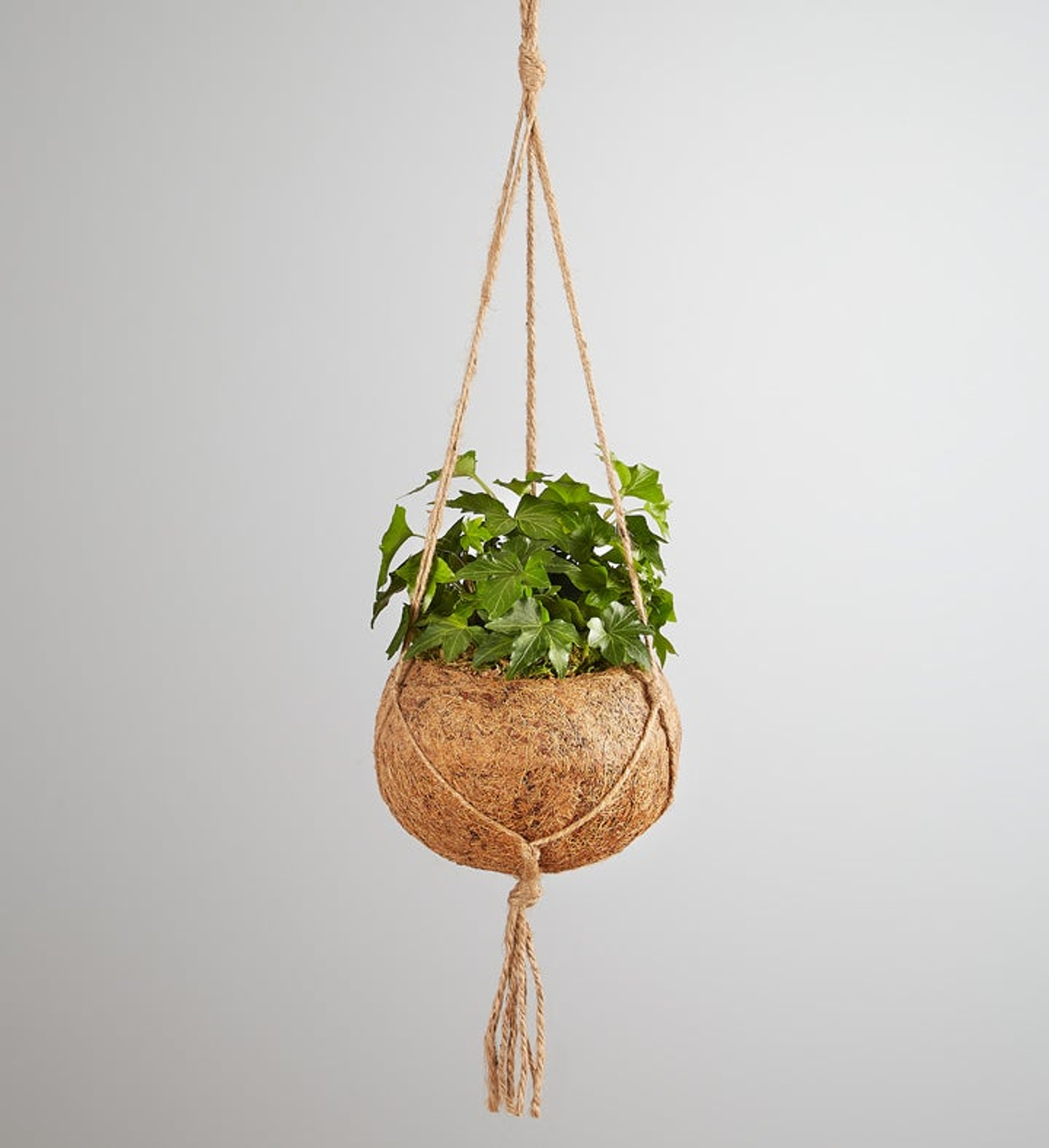Meet the Kokedama: Origin and Care Tips
Jan 04, 2021
Six Kokedama Dos and Don’ts
Do water the roots regularly--too little water is the #1 killer of these little hanging house plants.
Do spritz the foliage with spring water to avoid mineral build up on the leaves.
Do feed them with a water-soluble fertilizer formulated for foliage plants.
Don’t put them near a drying vent, heater, outside door, or open window. Drying winds and vent air will stress these delicate plants.
Don’t be afraid to trim any untidy stems or wayward roots.
Don’t forget that Kokedama are 100% biodegradable.

The Kokedama art form originated in Japan centuries ago and is akin to bonsai. It has gained new-found popularity with the rising interest in house plants for small spaces. Kokedama literally translates to “moss ball” in Japanese, and a mature specimen is a beautiful thing. Small plants are rooted into balls of moss and then suspended in the air from strings and carefully watered, spritzed, and trimmed. The limited growing space keeps plants compact, and their roots eventually become artfully exposed. For added beauty, the moss grows around the ball, lending a rich green color.
Three Artiful Kokedama
Our Kokedama shells are made of all-natural coconut coir, peat moss, and filled with potting mix. They are an eco-friendly, biodegradable alternative to plastic or resin hanging pots, and elevate homes with a choice of three plants—Brasil Heartleaf Philodendron, English Ivy, and Lemon Button Fern.
Tropical Brasil Heartleaf Philodendron (Philodendron hederaceum 'Brasil') has bright, heart-shaped leaves of green and gold. Its cascading stems look beautiful as the Kokedama grows. Provide it with bright, indirect light, warmth, and keep the ball evenly moist. If you forget to water now and then, philodendrons are forgiving, but twice weekly water is recommended. Trim the stems as needed. Wipe the leaves down occasionally with a moist cloth to keep them looking lustrous and pretty.
Delicate Lemon Button Fern (Nephrolepis cordifolia 'Duffii') has airy fronds of bright green, and the foliage has a light, lemony smell when crushed. As the Kokedama ages, the fronds become denser and blend beautifully with the green moss. Provide filtered sunlight to light shade and keep the ball evenly moist--typically they require watering three times weekly. Regular misting helps keep the fern fresh.
Traditional English Ivy (Hedera helix), with its trailing stems of dark green leaves, lends a classic look and is an easy-care plant as long as it is regularly trimmed and watered. Water two to three times weekly. It will thrive in indirect bright light or shade. As with the Philodendron, wipe the leaves down as needed.

Kokedama Watering
Either dip the Kokedama base in a bowl of water or use a bonsai watering can to water from the top. Placing a plate or splat mat below the plants will keep them from dripping on furniture or floors. Watering with spring water reduces the chance of mineral deposits. As plants grow, Kokedamas require more water. Trimming excess top growth can reduce watering needs.
Kokedama Fertilization
There are two good methods of fertilization--you can spritz or dip. To spritz, fill a bottle with a half-strength diluted solution of water-soluble fertilizer formulated for foliage plants and spritz the leaves monthly. To dip, fill a bowl with a full-strength solution of the fertilizer and dip the ball into it. Let the ball rest on a plate until it stops dripping and then rehang it. Do this three times yearly--in the spring, summer, and fall. Be sure to follow the manufacturer’s recommendations for fertilizer strength.
Kokedama Placement
All three of our Kokedama grow best in indirect light or partial shade, so avoid direct sunlight, which can quickly dry moss and scorch foliage. Due to their higher water demands, these artful little plant spheres look just right in a kitchen or bathroom where it’s easier to remember to water and spritz them regularly. The warmth and humidity of these spaces are also beneficial. You may also hang the trio near your workspace for added tranquility and beauty.








